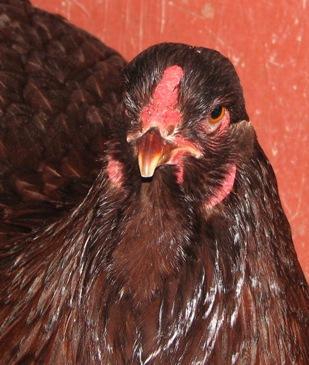Phrases like those are mirrored or closely mirrored in many of the articles I have. The very last line:
Buckeyes suited me best, for my hens had that brown red surface like a ripe buckeye and the males were mostly almost a maroon red.
That is why I think the buckeyes are a darker color of garnet/brownish-red/maroon/buckeye nut color. The shades are all very close (not exact, but close) in nature. All of the pullets/hens that are this color always have that black "ticking" in the hackle feathers. I've never seen a darker hen that hasn't had it.
right or wrong?????/ At least it is fun.
Still no mention of the males being "too dark of a red color", you read quite a bit about them being darker than a RIR, but never to dark compared to any other breed.
Thanks for your input, knittychickadee
That is why I think the buckeyes are a darker color of garnet/brownish-red/maroon/buckeye nut color. The shades are all very close (not exact, but close) in nature. All of the pullets/hens that are this color always have that black "ticking" in the hackle feathers. I've never seen a darker hen that hasn't had it.
right or wrong?????/ At least it is fun.
Still no mention of the males being "too dark of a red color", you read quite a bit about them being darker than a RIR, but never to dark compared to any other breed.
Thanks for your input, knittychickadee
Last edited:









